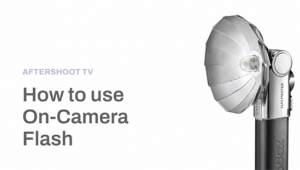Digital Help
Q&A For Digital Photography Page 2
Infrared In Digital
Q. I recently bought a Tiffen #87 infrared filter to use with my Nikon D100
digital camera. With it installed, I can't see anything through the viewfinder.
If I take a picture and download it into my computer, I get a red and white
image, which is definitely an infrared picture. The image is very fuzzy, and
although I realize that this may be a feature of infrared images, it is much
more out of focus than I desire. I don't know how to properly use this
filter. Do I have to compose the shot before I install the filter, and then
count on the automatic focus and metering system to produce an acceptable result,
or is there something I'm missing?
Beverly Wickersham
A. Infrared light is at a distinctly different frequency than
the middle of the visible spectrum, and that difference in frequency affects
focus (distance). On most better, older lenses there was a red infrared focus
correction mark on the lens barrel. So (using manual focus) you could focus
on your subject visually, then note the focus position relative to the normal
marker, and move the focus ring to bring the focus to the red mark correcting
for the frequency difference. When you use an 87 filter it blocks out so much
visual light that most of the exposure is made by infrared and its frequency
difference causes a significant focusing error.
First you should switch your camera to manual focus mode. Then if you have a
red infrared focus correction mark on your lens barrel, focus on the subject
without the 87 filter, install the filter and correct the focus point to the
red mark and make your exposure.
Keeping Scanned Photos In Order
Q. My problem is a strange one. I use a Minolta DiMAGE Scan Dual 3 film scanner
on a Windows XP system and I have Photoshop 7 and Roxio Easy CD Creator Version
6. When I scan a roll of film and give each scanned file the same number that's
on the film strip and try to copy in that order the files won't go where
I put them. How do I get my files to go in the order I want them to on my computer
and how do I get them to print in that same order?
E.D.
A. Most computers today have a master folder on the hard drive called "My Pictures." Within that folder you may want to create subfolders for each roll of film, possibly naming the subfolder by the date the roll was taken (if you have more than one roll for a date put a -1, -2, -3 at the end of the date). Then direct all of the scans from a roll to the dated folder for that roll. Computers put files and folders in numerical order, automatically reading from the front of the file name. The trick is to append the file name. For instance, if you have a file that is 18A.jpg for the frame, then add 001-18A.jpg to the front of the file name to make it read as the first in a series. Add 002 to make it the second in the series. Once you have done that the computer will arrange them in descending order, and they will print consecutively in that order.
Digital Camera Profiles--Are They Necessary?
Q. I am relatively new to the concept of color profiles even though I have been
completely digital for over five years. My dilemma is not great, yet I would
appreciate a bit of guidance.
1. Do I need to use a color profile with my Olympus E-20N digital SLR? If so,
I have not been able to find one online.
2. I have used Canon, Ilford, and Pictorico paper recently, and I have color
profiles for the Canon and Ilford. The best color match with my monitor does
not necessarily occur when I use the paper manufacturer-recommended profile.
So, I have used a trial and error method: printing four images on one piece
of paper, each using a different profile. Is this typical?
Kent
A. Although there are some advantages to working with cameras
that have selectable parameter profile settings, like the Adobe RGB profile
choice, the fact some cameras do not have this feature is more an inconvenience
than a serious deficiency that will affect final image quality. It may just
require a bit more color adjustment to obtain a desirable set of color image
characteristics after you download to your computer and image-editing application.
Printer profiles are, or should be, specific to the make/model of printer, the
ink set, and the specific paper. Generic profiles for paper should be specific
to a particular make/model printer if downloaded from a paper company's
website. If you want better than generic profile performance you just about
have to do your own custom profiling. The least expensive and most effective
resource to do this is ColorVision's PrintFIX: www.colorvision.com.
A Raw Deal
Q. I noted your article on using raw files in the September 2004 issue of Shutterbug.
But how do you use raw files on your computer if it refuses to open them? I
have a Nikon D70, which will take raw NEF images, but I'm told I need
Photoshop 7 with a plug-in or Photoshop CS to handle them. I'm running
Photoshop 5 and can't afford the latest version. Is there any other program
that will allow me to convert raw files to TIFF? For the moment I'm using
JPEG Fine on the D70, which I was astonished to find yields files of only 72dpi
resolution but sized 41x27". Is the quality of any blowups from these
files going to be anything near to that of raw files?
David Baird
A. I would most definitely suggest then that you purchase a copy of the new Adobe Photoshop Elements 3.0, which was recently released for sale and which has raw file support for nearly all current digital cameras including your D70. It is under $100 and provides an efficient, easy way to input and adjust camera raw files to achieve images that most fully utilize the capabilities of your camera.
Effective ISO "Film" Speeds With Digital Cameras
Q. I know film cameras very well since I have been using them since 1970, but
digital cameras have me a little gun shy. I was going to buy a Minolta A2 because
it has an external PC cord hook-up that I can use with my Speedotron Brown line
system. I was set to order the camera until I read an article that said the
A2 takes great photos in 50 or 100 speed and average in 200 speed, but the noise
factor in 400 and 800 speed is totally unacceptable and thus makes this camera
not such a good buy.
My problem is I shoot most of my film cameras in 400 speed and I like to enlarge
to 8x10 and 11x14. Do you know if there is any truth to that magazine's
claims, or are their tests too subjective? I do like this camera but if I have
to I will look into others.
Peter Burger
A. With all digital prosumer cameras as you increase the effective
ISO rating there is a tendency to generate more image noise. Whether the Minolta
is more so in this regard than another camera I have not had the experience
to confirm.
However, please be aware that with prosumer digital cameras you don't
need to use as much film speed as with a film 35mm camera because the effective
focal length is less, so you can shoot at larger lens apertures and obtain the
same depth of field. In other words, to obtain the same angle of view as a film
35mm camera you need to use a shorter lens so you can use a larger aperture
f/4.0 vs. f/5.6 and obtain the same depth of field, thus you can effectively
use a lower ISO setting.
Monitors For Photo/Computer Processing
Q. Thanks for your information on monitors in a recent Shutterbug article. I
have ColorVision PhotoCAL that I use to balance two Sony E440s. Is there anything
else that I could get to help make sure that what I see on the screen is what
my Epson 2200 or R800 will print? I also have a laptop but have not yet invested
in an LCD Spyder and so am left guessing when I print from my laptop to an R200
or my older 925. Any suggestions?
David Hannah
A. If you want a good CRT, and $700 for a 22" monitor
is pretty reasonable, you should act. As soon as LCD prices for a high-quality,
same-size flat panel model gets down to CRT prices, the CRTs will very likely
disappear.
ColorVision just released their new Spyder2 and Spyder2PRO. Both will calibrate
and profile both CRTs and LCDs, including laptops. From my experience with the
new Spyder2, the accuracy of the monitor calibration and profiling is more than
worth the upgrade cost, and especially so if you have more than one monitor
and require matched performance between them.
Digital Cameras Are Proprietary Devices
Q. I hope you can help me on this. I am an antique dealer and when I go to antique
shows or to a client I carry a small Canon PowerShot S400 pre-loaded with pictures
I have taken with a DiMAGE 7Hi. The Canon fits right into my pocket and is easy
to turn on and show another antique dealer or client what I have in stock for
sale.
I recently bought a Leica Digilux 2 and a Panasonic DMC-FX7. I use the Leica
as a "studio" camera and transfer the card to the very small DMC-FX7
(which has a much larger and brighter LCD than the Canon). The Canon cannot
play the memory card. I called Panasonic tech support and they told me that
the camera is made to only show pictures that that camera took. Both are shot
in JPEG at 640. There must be a way to show the shots (using some program?).
How can the camera know where the SD card came from? By the way, the cards play
fine in a card reader, on my computer, etc. Can this be a problem with SD cards?
Richard Lovell
A. No, it is not a problem with memory cards. It is what the
Panasonic people told you, the camera saves files in a semi-proprietary format
that the camera is designed to recognize exclusively. The problem is the camera
and Panasonic. But that is not unusual, as many cameras are internally proprietary.
There is a better way to accomplish what you want to do with your "small"
digital cameras. For a similar cost you can now purchase portable, battery-operated
hard drives which have LCD screens and which will allow downloading memory cards
to the hard drive. These units will hold up to 15,000 JPEG photo files and will
display all kinds of digital cameras' JPEG files, regardless which camera
made the file.
Two new models of these portable hard drives have just been announced, including
a new version of the extremely popular Apple iPod that now has an LCD screen
and will read and download from digital camera memory cards. Epson just announced
a new P2000 which has an entirely new 3.8" high-resolution LCD screen
(Epson is owned by Seiko which is a world leader in LCD screen research and
development).
ANNOUNCEMENT:
I am pleased to announce the new second edition of my eBook DIGITAL DARKROOM
RESOURCE CD. The CD now contains 16 chapters totaling 227 pages in Adobe Acrobat
.PDF format, providing easy to read text and large high quality illustration.
The CD is available for $20 plus $2 shipping and handling (US Mail if available).
Ordering is as simple as sending a check or money order for $22 made out to
me, David B. Brooks and mailed to PO Box 2830, Lompoc, CA 93438.
- Log in or register to post comments


































